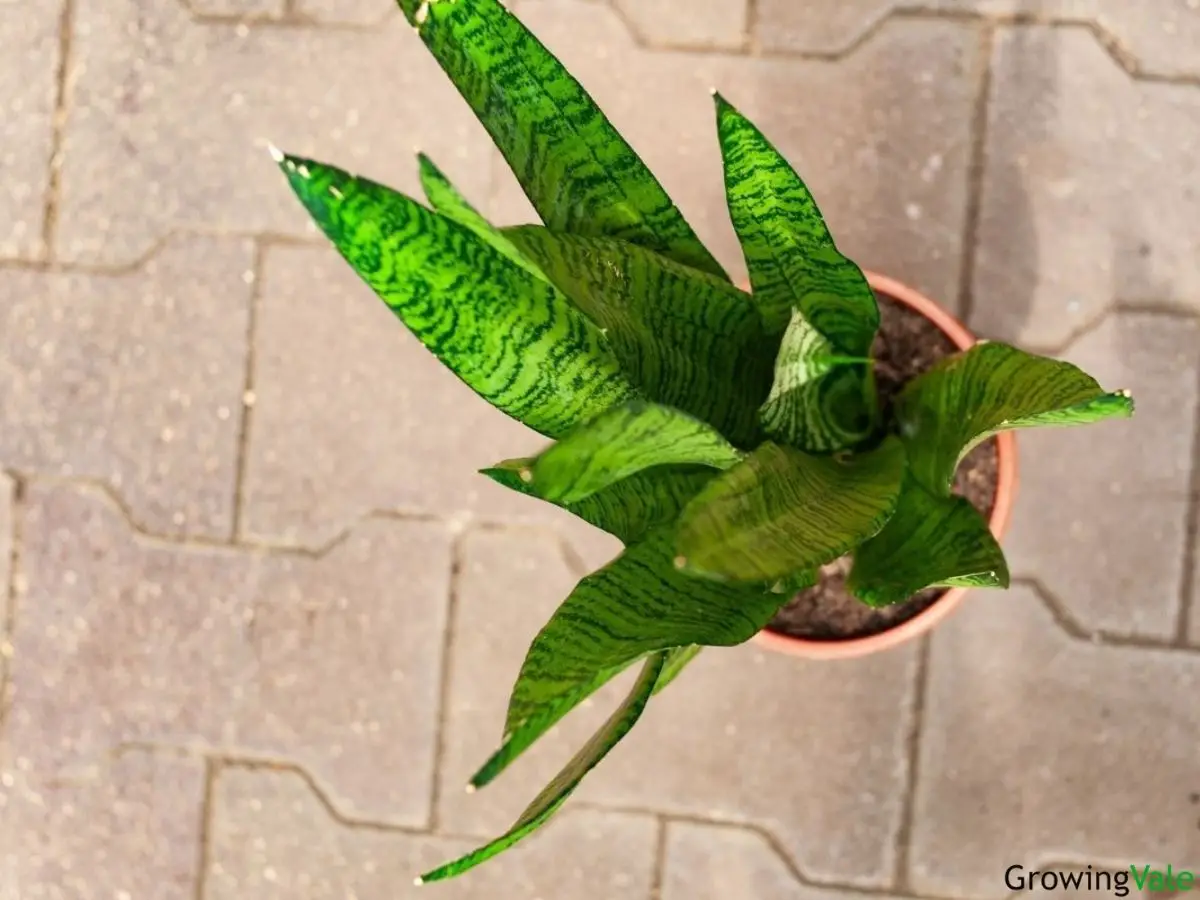Healthy succulents eventually outgrow their pots, and Dracaena trifasciata is no exception. The root systems and rhizomes of this eye-catching plant can extend to every nook and cranny of your pot’s interior.
A sure sign that your snake plant (Mother in Law’s Tongue) is ready to be divided or moved into a larger planter is the presence of bulges around your pot. If the soil appears to shrink away from the pot edge when fully dry, your plant has become rootbound. This means that its roots have fully embraced and permeated through all the soil in its pot.
Though the leaves may not quickly show signs of ill-health and snake plants generally favor being root bound, it will soon need to be repotted. It may not always be best to wait for the pot to bulge as this can cause the foliage and rootstock to suffer. Repotting should be done once every couple of years.

Best Time To Repot Sansevieria Trifasciata
The best time of the year to repot your snake plant is once the final winter frosts have thawed or very early in Spring. During this time of year, the plant begins to exit its period of dormancy in preparation for another growth period. The roots will be grateful for a good stretch in a larger pot as they “wake up” from a winter slumber.
If you wait until the end of summer to repot, the root system may take a much longer period of time to become fully established.
Repotting due to disease
If the snake plant has suffered from root rot or mold infestations, you will have to rehabilitate it by uprooting the entire plant and removing any affected areas. Don’t reuse the soil in the previous pot as it may be compromised by pathogens. Remove any affected or decaying parts before repotting.
Transplanting Snake Plants
If you don’t intend to divide your plant, select a pot that is slightly larger (1-2 inches) in diameter and height. This should have a drain hole in the bottom. Cover the hole with mesh or peat and fill about a third of the pot with a well-draining soil mix.
Moisten the soil in the original pot to ease plant removal. If you are able to, place your hand on the soil surface, making sure that the leaves are securely located in between your fingers. You can turn over the pot or tip it on its side, depending on how heavy it is. With a few taps around the pot, the root bound plant should easily slide out.
Place your snake plant in its new pot. It should ideally be at the same height relative to the rim of your pot. You can adjust the height by adding or removing soil underneath the plant. Once you’re satisfied, fill in the rest of the pot with soil.
Aftercare Tips
Place the freshly potted snake plant in an area with indirect light so that it can acclimate without becoming stressed. If you’ve repotted your plant in the morning, you may water the soil thoroughly and ensure that the plant receives ventilation throughout the day. Delay watering until the next morning if you finish repotting your plant at night.
FAQs
When should I divide my snake plant?
If your plant has produced multiple offsets or the leaves are beginning to look crowded, you may divide your plant.
Would a deep pot be better for the plant?
Dracaena trifasciata will not require a deep pot as its roots generally grow sideways instead of downward. Pots that are too deep can accumulate moisture and cause root rot.

